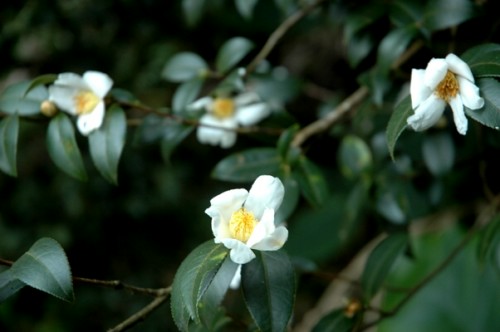How to plant Camellia oleifera seedlings can Camellia sinensis be grafted
Camellia oleifera is a kind of tree species with high breeding value, because it not only has ornamental value, but also can be used to graft camellias and enhance each other's ornamental value.

I. cultivation techniques of Camellia oleifera
Land selection: the sunny slope with deep soil layer, good drainage and pH value of 4.5 to 6.0 should be selected, and the slope should be gentle and the slope should be less than 20 °. Camellia oleifera is not suitable for growth in lowland and shady slope water wetland.
Planting: Camellia oleifera can be planted from late November in winter to early March in the following spring, but it should avoid the cold and dry period, and it is better to plant in spring. The area below 400m above sea level can be planted in winter, but Camellia oleifera can not be planted in dry winter. Planting should be carried out in cloudy or sunny days, and coke marl 250g/ plants and calcium magnesium phosphate fertilizer 5g/ plants should be added at the roots. The root system of the seedling is naturally extended, the soil is added and compacted layer by layer, and the grafting interface is flat with the ground when planting the grafted seedling, so that the root is comfortable, the seedling is straight and the soil is solid, and the root system is closely combined with the soil by pouring water after planting.
Management: Camellia oleifera avoid waterlogging and drought, pay attention to drainage in rainy season, and do a good job of drought resistance and seedling protection in time during summer and autumn drought. Camellia oleifera pruning is mostly carried out after fruit picking or before spring germination.

Control of White Silk Disease of Camellia oleifera seedlings
1. Pay attention to the selection of nursery land and tree planting site. Can use 70% nitrobenzene 1 kg fine soil 15 kg mix well, combined with the bed preparation into the bed surface soil layer, into the soil disinfection. Gramineae rotation can be used in places where crops are seriously affected. At the same time, pay attention to drainage, remove weeds and reduce the source of infection.
two。 Chemical control: dig out the diseased plant and its nearby bacteria-carrying soil, and disinfect it with lime soil, 50kg per mu. 0.2% liter mercury solution can also be used to spray the root parts of seedlings. Or watered with 1% copper sulfate.
3. It can not only promote the sturdiness of seedlings, but also promote the cultivation of saprophytic microorganisms in soil to resist the activity of pathogens or reduce the degree of disease.

III. Steps of Camellia grafted with Camellia oleifera
1. Cut the scion of camellias into 5-6 cm segments, with 2-3 lateral buds in each section. In order to reduce evaporation, cut the leaves in half.
two。 Cut a long slope 1 cm below the scion of camellia, about 2 to 3 cm long, and cut a short side on the opposite side of the long side, with a length of less than 1 cm.
3. Cut the section of the rootstock flat, select a smooth place on the xylem edge of the cross section of the rootstock and cut a knife downward, the length and width of the cut of the rootstock correspond to the long side of the scion, and then insert the length of the scion obliquely facing the rootstock, and align the cambium on one side, wrap the cortex of the incision of the rootstock around the scion.
4. The thick rootstock can be grafted with several scions along the periphery, and then tied together. Tie with a plastic film strip about 1 inch wide (which should have a certain degree of elasticity) to be bound, and the film strip must be tightened when binding.
6. After binding the rootstock, cover the white transparent plastic bag, and tie the mouth of the bag with packing rope, which can play the role of moisturizing. In places where the sun is too strong, the grafted plants should be protected by shade. Sprouts on rootstocks should be wiped off at any time during maintenance to reduce nutrient consumption.

All right, this is the end of the introduction on how to plant Camellia oleifera and grafting camellia with Camellia oleifera. I hope the above introduction can help you improve the success rate of planting Camellia oleifera seedlings and make your Camellia oleifera trees grow strong and healthy.
Related
- Wuhan Hospital Iron Tree Blooming Result Was Instantly Frightened by the Gardener Master
- Which variety of camellia is the most fragrant and best? Which one do you like best?
- What is the small blue coat, the breeding methods and matters needing attention of the succulent plant
- Dormancy time and maintenance management of succulent plants during dormancy
- Minas succulent how to raise, Minas succulent plant pictures
- What are the varieties of winter succulent plants
- How to raise succulent plants in twelve rolls? let's take a look at some experience of breeding twelve rolls.
- Attention should be paid to water control for succulent plants during dormant period (winter and summer)
- Watering experience of twelve rolls of succulent plants
- Techniques for fertilizing succulent plants. An article will let you know how to fertilize succulent plants.



